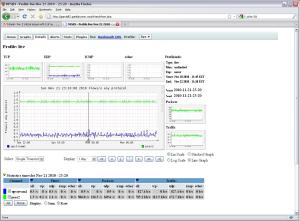It’s very tough to set up a network in real-time for any testing the configuration of networking applications. To check a simple problem, it takes a huge amount of time and energy. So it’s not quite probable to setup the entire network in a real-time. There’re several tools, which assist network developers to check their network setups practically whether the networking application is capable of working in real-time environment. A network simulator is one of them. Simulators are employed for performance testing of networks and networking applications. With the assistance of simulation tools, both time & expenditure of testing the operations have been decreased and executions are made effortless. In this post, we will discuss about the main features and advantages of SNMP Simulator.
 A network simulation is a practical depiction of a network. There are two common kinds of network simulation – one is employed on active networks and the other is employed prior to a network is assembled. The aims of these simulations are discovering issues or preventing them in the first place. Organizations can enhance network dependability and lower maintenance expenditures. In present time, the simulation is one of the most crucial technologies which imitate the real life and imaginary objects on computer.
A network simulation is a practical depiction of a network. There are two common kinds of network simulation – one is employed on active networks and the other is employed prior to a network is assembled. The aims of these simulations are discovering issues or preventing them in the first place. Organizations can enhance network dependability and lower maintenance expenditures. In present time, the simulation is one of the most crucial technologies which imitate the real life and imaginary objects on computer.
The Network Simulator offers a versatile, integrated, easy-to-use GUI-based network designer tool to create and replicate a network with SNMP, Telnet/SSH, NetFlow, TL1, TFTP and DHCP.
The researchers use network stimulation to check different set-ups that aren’t simple to present in real-life due to its complexity and experiments. Network stimulators are extremely helpful, offering controlled and reproducible environment to check latest networking protocols or transform the active ones. Also, simulation tools are very handy to design diverse network topologies employing various kinds of nodes. Various people like network designers, academic researchers, software developers and quality assurances are employed to design, validate, imitate and examining the performance of diverse network protocols.
Usually, network simulator tools will comprise a wide variety of networking technologies and protocols which aids the user to develop complicated network from fundamental building blocks. You can effortlessly design diverse network topologies employing different kinds of basic building blocks like end host, hubs, mobile users, routers, network bridges and optical layer designs. These tools are used also to check and assess the effect of diverse parameters on the protocols being experiential.
Network stimulator tools are accessible with diverse features. Some of the network simulators are MIMIC Simulator, OPNET, REAL, OMNeT++, QualNet, MIMIC Virtual Lab and J-Sim.
Also, some NetFlow implementations permit the surveillance of packets on the egress IP interface, but this should be employed with care.






0 comments:
Post a Comment